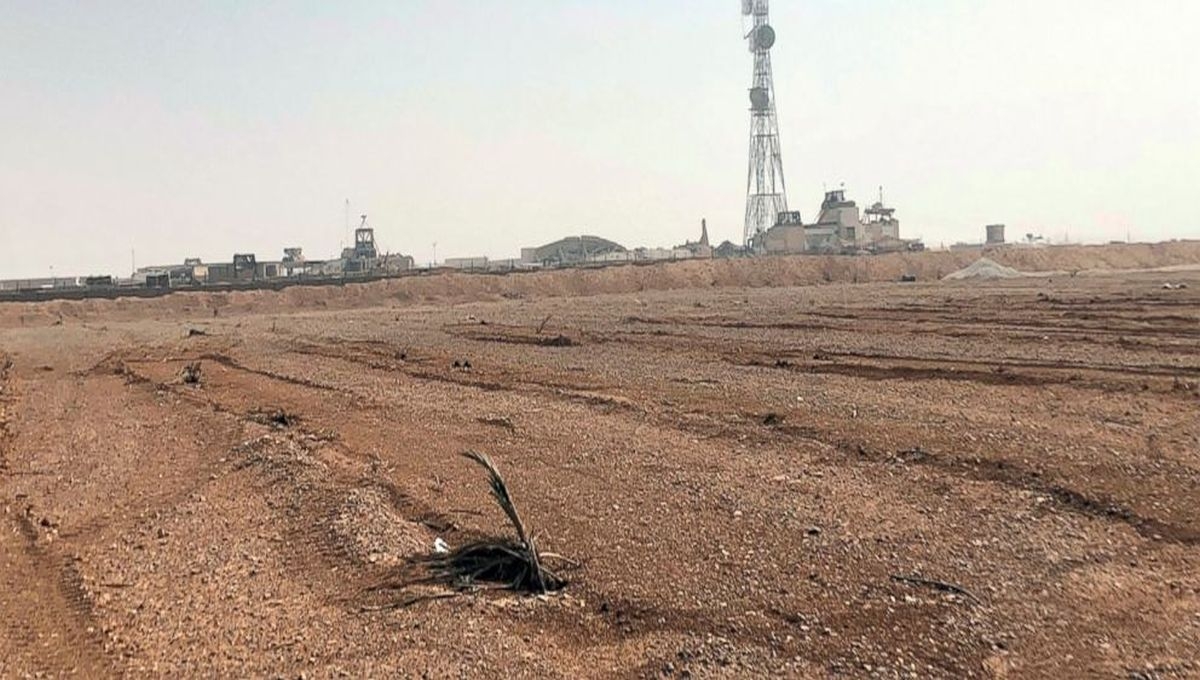US general visits troops fighting Islamic State in Syria

The top U.S. commander for the Middle East made an unannounced visit Monday to a key military outpost in southern Syria, pressing the need for a continued U.S. presence there to root out remaining Islamic State fighters and serve as leverage against growing Iranian activity in the region.
Striding through the rocky and dusty al-Tanf garrison, Army Gen. Joseph Votel said the outpost near the Iraq and Jordan borders still serves an important purpose even though U.S. and coalition troops have "largely eliminated" the Islamic State group from the area. But he said the overall mission has not shifted into a counter-Iran campaign.
"We have a defeat ISIS mission," said Votel, referring to the Islamic State group. "But I do recognize that our presence, our development of partners and relationships down here does have an indirect effect on some of the malign activities that Iran and their various proxies and surrogates would like to pursue down here."
An Associated Press reporter and journalists from two other media organizations accompanied Votel, head of U.S. Central Command, to the garrison. It was the first time that media members gained access to the garrison, which opened in 2015. For security reasons, his visit couldn't be disclosed until after he left the country.
Votel's visit to the base underscored the dual role it plays because of its strategic location.
There are 200 to 300 U.S. and coalition troops there to train and accompany local Syrian opposition forces on patrols to counter the IS group. The base is also located on a vital road linking Iranian-backed forces from Tehran all the way to southern Lebanon — and Israel's doorstep.
The military will not say how many of the troops are U.S., but they appeared to make up a significant portion.
Because of its location, the base represents what some believe is a key bargaining chip in the campaign to bring peace to Syria and to decrease, if not eliminate, the Iranian presence from the country.
Israel and the United States have demanded the withdrawal of all Iranian forces from Syria. But Russian President Vladimir Putin has warned that any talks about the withdrawal of Iranian forces would be contingent on providing security guarantees for Syria. Syrian leaders, meanwhile, have called for the withdrawal of U.S. troops from the Tanf area.
So, even as forces at the border base focus on the IS fight, they are seen as a military line in the sand against Iran's campaign to strengthen its hold on Syria.
A full withdrawal of Iranian-backed forces from Syria is unlikely, since Tehran and its proxies, including the Lebanese Hezbollah, have consolidated ground across southern Syria. Iran has repeatedly insisted that it only has advisers in Syria, but Tehran is now believed to command up to 80,000 Shiite militia fighters and paramilitary forces in Syria.
And Iran and Russia have given Syrian President Bashar Assad crucial military and political assistance as his regime has recaptured around 60 percent of the country.
Messages from President Donald Trump's administration on the U.S. role in Syria have been mixed, with Trump saying both that he wanted to get U.S. troops out and that stopping Iran's malign influence in the region is a priority. More broadly, the U.S. sees its military presence in Syria as a pressure point, to drive a political transition in the war-ravaged country.
Votel acknowledged the military's role in the ongoing push for a political settlement, saying that "a key part of our job is to ensure that our diplomats have the maximum amount of leverage to do their jobs. And holding terrain — whether it's al-Tanf or anywhere else — I think, provides leverage."
Still, he and other military leaders at the base focused on the IS fight on Monday, as troops trained members of the Maghawir al-Thawra, or MAT, a Syrian opposition group that numbers about 300.
Along the dirt berm that encircles the outpost, about 10 MAT soldiers were lying on the ground Monday morning, peering through the scopes of their M-16 rifles and firing at targets as part of a training day. U.S. Army Special Forces soldiers looked on and hollered out instructions.
Col. Muhannad al Tala, leader of the MAT troops, said through an interpreter that he wants the coalition troops to stay and to continue to go out on patrols with his forces to battle IS.
Standing on the Baghdad Damascus Highway, which cuts through the base, Tala said that while his main mission is IS, he believes his troops must protect people in the region from any force moving through, including Iran.
At his feet as he spoke were dozens of shell casings — a testament to the live-fire training that his troops have done along the outer perimeter.
Inside the coalition section of the garrison, bombed-out concrete structures, precariously held up by leaning columns scarred by artillery blasts, provided a grim reminder of earlier fights to take the outpost back from IS control.
Votel, who spent about six hours at the base, warned against counting IS out too fast.
He said the base provides a critical location where troops can watch for IS members fleeing the fierce fighting against the U.S.-led coalition in the Middle Euphrates Rivers Valley. The MAT, and coalition troops that accompany them on patrols, can help ensure that IS is not able to regroup and set up a headquarters in southern Syria.
And IS fighters fleeing the U.S.-led coalition from the final main combat in the Middle Euphrates River Valley are finding refuge in the sprawling deserts and scattered villages across southern Syria.
"I think the challenge for us is to keep the pressure on them," said Votel, adding that if the coalition doesn't keep IS on the run, the group gets the opportunity to reorganize and reconstitute their insurgent networks.
